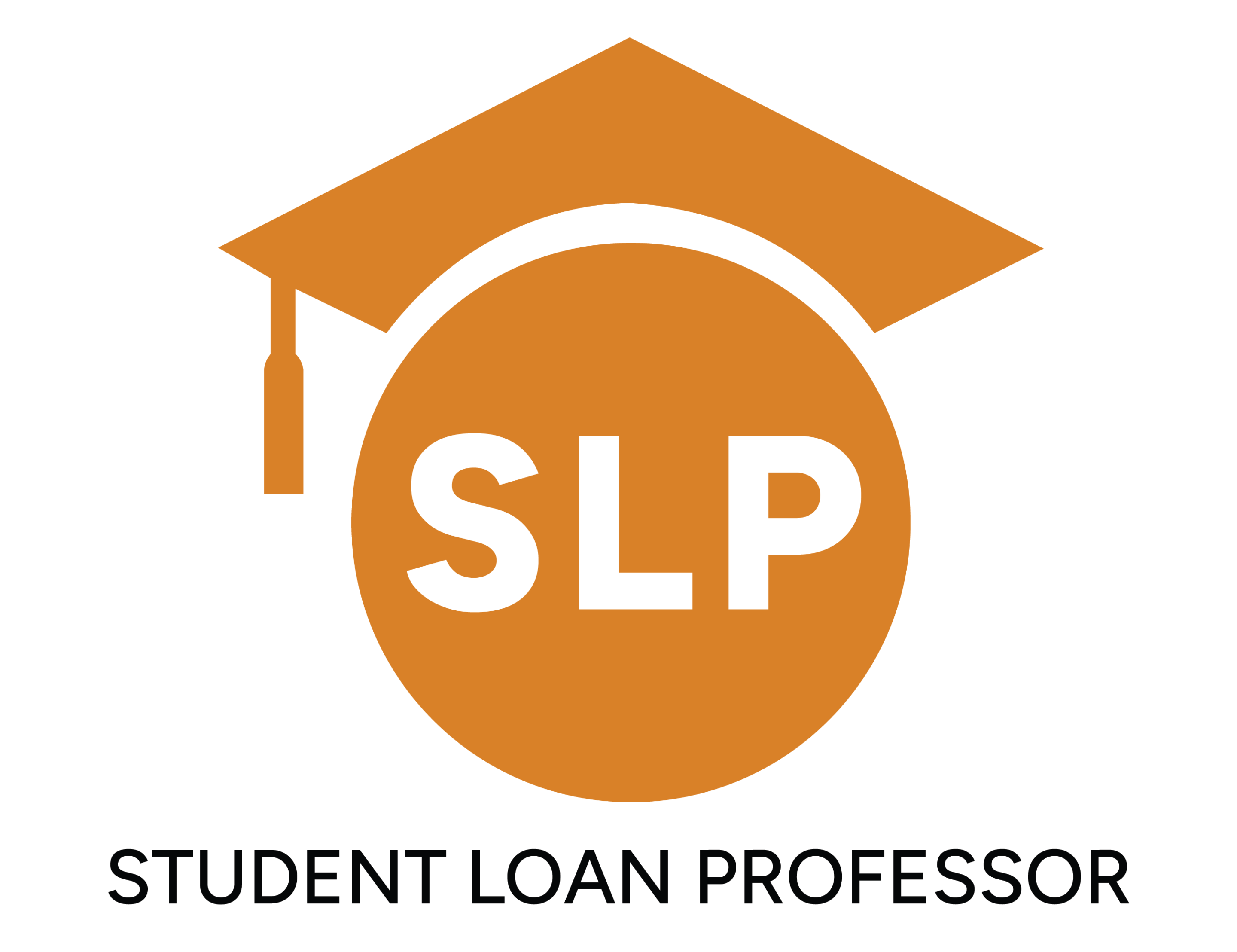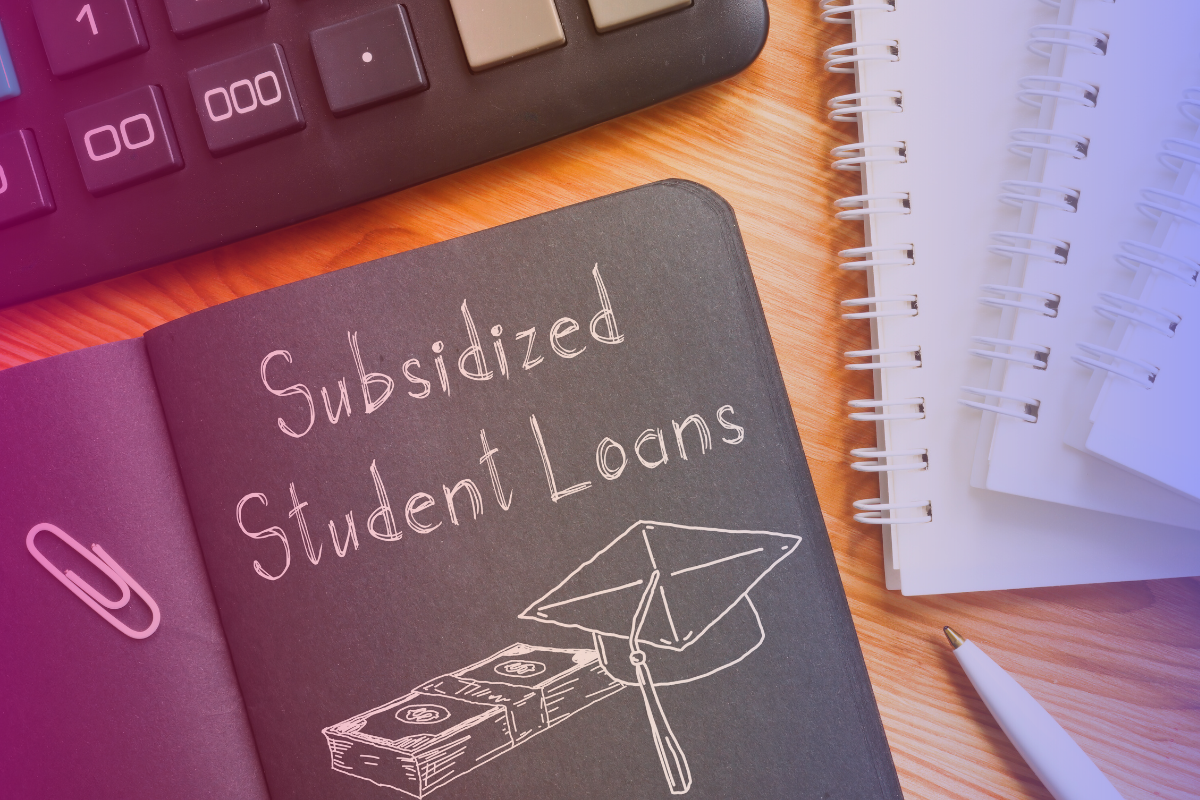Key Takeaways
- Subsidized loans cover interest during school, grace, and deferment periods.
- Subsidized loans require financial need, while unsubsidized loans accrue interest immediately.
- Annual borrowing limits range from $3,500 to $5,500, with a $23,000 aggregate cap.
- Pros include lower interest rates and federal protections, but borrowing limits are restrictive.
What Is A Subsidized Student Loan?
A subsidized student loan, also called a direct subsidized loan, is a federal loan designed to help students with financial needs cover the cost of education.
The key feature of this type of loan is that the U.S. Department of Education pays the interest while you’re in school, during your grace period, and any deferment periods.
This allows you to focus on your studies without worrying about accumulating interest on your loan balance.
Direct subsidized loans are part of the federal direct loan program, which also includes unsubsidized loans.
Subsidized Vs. Unsubsidized Loan
The main difference between subsidized and unsubsidized loans lies in how interest is handled.
With subsidized loans, the government covers the interest for some time. In contrast, direct unsubsidized loans start accruing interest from the moment they’re disbursed, and that interest is your responsibility throughout the loan period.
Subsidized loans are only available to students who demonstrate financial need, while unsubsidized loans are available to all students, regardless of financial situation.
Both loan types have borrowing limits, but subsidized loans typically have lower limits, making them more suited to students who genuinely need them.
Who’s Eligible for Subsidized Student Loans?
Subsidized federal student loans are available to undergraduates with demonstrated financial need who meet specific eligibility criteria.
Here are the main criteria you’ll need to qualify:
- You must be either a U.S. citizen or a noncitizen with a valid SSN (Social Security Number).
- You must be enrolled or accepted into a certificate or degree program on at least a half-time basis.
- Ensure your academic performance remains satisfactory throughout the loan period.
- You must certify that you must not be in default on any federal loan payments.
- You must confirm that you’ll use your federal student loan solely for educational purposes.
- You must demonstrate that you qualify to obtain the certificate or degree you’re pursuing.
Once you’ve checked all of these eligibility criteria, you can apply for the subsidized loan by completing the FAFSA (Free Application for Federal Student Aid).
There’s no credit check involved, so you won’t need a cosigner or anything to improve your chances of getting the loan. Approval solely depends on your financial situation, as long as you meet the eligibility criteria.
As a dependent student, you’ll need to provide financial information for both yourself and your parents to demonstrate your need for financial aid.
What If You’re Ineligible?
If you’re ineligible to receive direct subsidized loans, you might qualify for other financial aid alternatives such as:
- Direct Unsubsidized Loans: These loans are available to all students, but interest starts accruing immediately, so they might not be the best choice if you have limited income during your studies.
- Private Student Loans: Private loans are offered by banks, credit unions, or private lenders. The loan servicer often requires a cosigner and usually imposes higher interest rates compared to federal loans.
- Federal Work-Study Programs: These programs provide part-time jobs for students with financial needs, allowing them to earn money to cover education expenses.
- Scholarships and Grants: Both are forms of free financial aid and don’t need to be repaid. However, they’re usually available based on merit, financial need, or field of study, making them highly competitive funding options.
- Parent PLUS Loans: These loans allow parents of dependent undergraduate students to borrow federal loans. They require a credit check and have above-average interest rates.
How Much Can You Borrow With A Subsidized Loan?
The amount you can borrow with a subsidized student loan depends on several factors, such as your year in school, your dependency status, and your financial need.
The amount you’re eligible to receive is capped by both annual and aggregate borrowing limits set by the U.S. Department of Education.
The maximum amount you can borrow each year depends on whether you’re a dependent or independent undergraduate student, as well as your year of study.
Here’s a breakdown of the annual borrowing limits for subsidized loans:
- First-Year Undergraduate Students: $3,500
- Second-Year Undergraduate Students: $4,500
- Third-Year and Beyond Undergraduate Students: $5,500
Keep in mind that the aggregate loan limit, which is the total subsidized loan amount you can borrow over your entire undergraduate career, is $23,000.
This limit is the total amount you can borrow in subsidized loans throughout your entire undergraduate career.
Factors That Affect Your Borrowing Limit
Even though there’s a maximum borrowing limit, your actual loan amount may be less depending on your cost of attendance (COA) and financial need.
The cost of attendance includes expenses such as tuition, fees, room and board, textbooks, and other essentials.
Your school will calculate your financial need by subtracting your Expected Family Contribution (EFC) from your COA. The loan amount you can get can’t exceed your financial need.
For example, if your COA for the year is $15,000 and your EFC is $10,000, the most you could borrow in subsidized loans is $5,000, even if your year of study would otherwise allow for a higher loan limit.
What Happens If You Max Out Your Limit?
If you reach the aggregate loan limit of $23,000 before completing your undergraduate degree, you won’t be eligible for further subsidized loans.
However, you can reduce your outstanding loan balance by making student loan payments, which can allow you to borrow again up to the aggregate limit.
The concept is similar to having a credit card with a limit. As you repay what you owe, you can borrow again within that same limit.
Subsidized Loans – Interest Rates
Federal student loans typically have lower interest rates than private loans, making them more attractive to students.
For the 2023-2024 academic year, the interest rate for direct subsidized loans is 6.53%. This rate is fixed, meaning it won’t change for the life of the loan.
However, this interest rate applies only to loans taken out after July 1, 2024, and before July 1, 2025. Any loans outside of that timeframe will likely have a different interest rate.
Pros and Cons of Subsidized Loans
Pros
- No Interest While in School: With subsidized loans, the government covers the interest while you’re in school, during the grace period, and deferment. This can save you a significant amount of money, depending on the length of your studies.
- Lower Interest Rates: Subsidized loans typically have lower interest rates than private student loans, making them more affordable and easier to manage on limited incomes.
- Flexible Repayment Options: Subsidized loans are federal student loans that offer flexible repayment options, including income-driven repayment plans. These plans can help students manage their loans more easily.
- Federal Protections: Subsidized loans come with certain protections, such as deferment, forbearance, and eligibility for loan forgiveness programs. These benefits provide extra security if you ever struggle to make payments.
Cons
- Borrowing Limits: The amount you can borrow is capped at lower limits than unsubsidized loans or private loans, which may not fully cover your education costs.
- Eligibility Restrictions: Not all students qualify for subsidized loans. You must demonstrate financial need based on your FAFSA, and the loan is available only to undergraduate students.
Let’s Maximize Your Financial Aid with Subsidized Loans
Choosing the right financial aid option is a big step. If you’re trying to decide between a private, subsidized, or unsubsidized loan, book a consultation with StudentLoanProfessor.
We’ll help you choose the best loan to suit your plans, goals, and financial status.
Brandon Barfield is the President and Co-Founder of Student Loan Professor, and is nationally known as student loan expert for graduate health professions. Since 2011, Brandon has given hundreds of loan repayment presentations for schools, hospitals, and medical conferences across the country. With his diverse background in financial aid, financial planning and student loan advisory, Brandon has a broad understanding of the intricacies surrounding student loans, loan repayment strategies, and how they should be considered when graduates make other financial decisions.



![Our Honest Thoughts On Aidvantage Student Loans [For 2025]](https://www.studentloanprofessor.com/wp-content/uploads/2024/10/SLP_fallback_2-no-logo-400x250.jpg)

